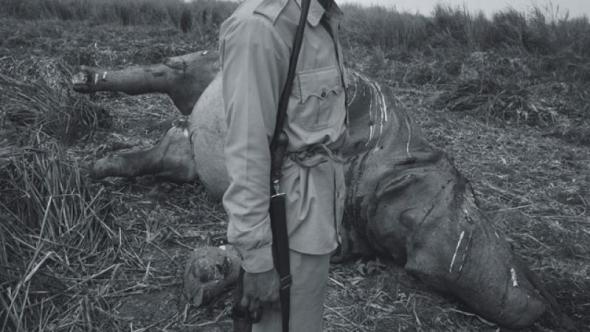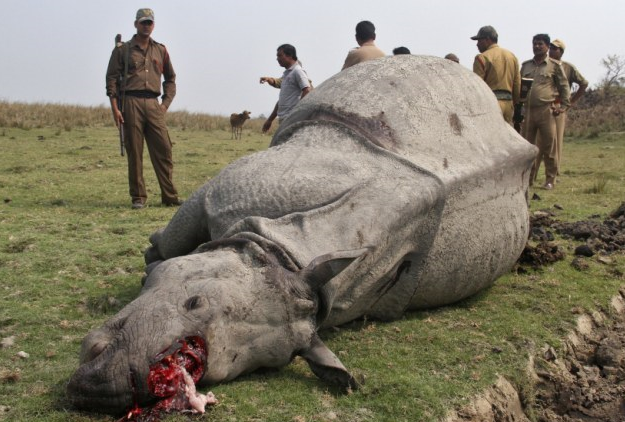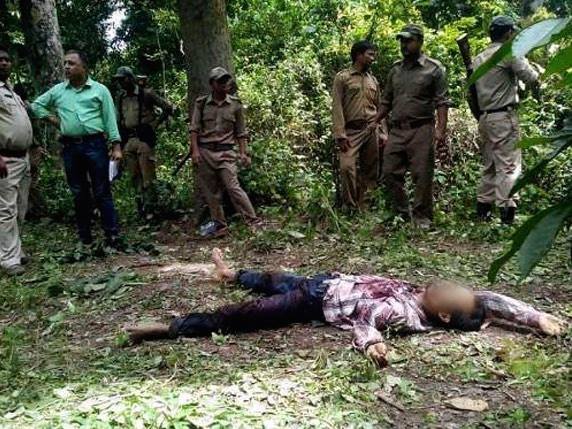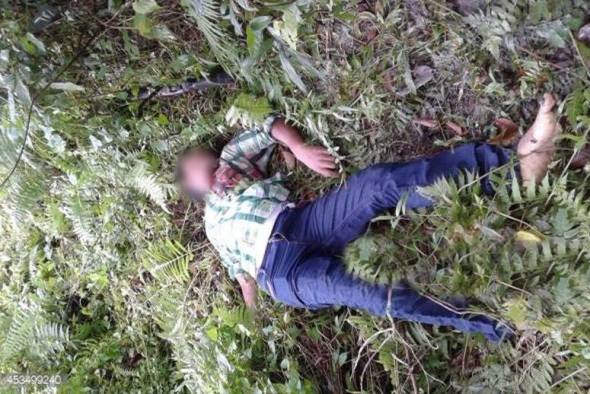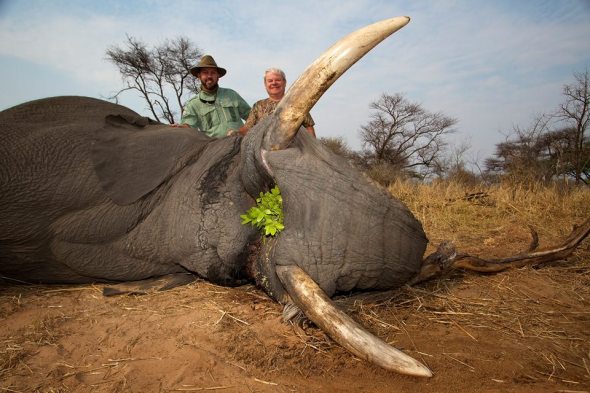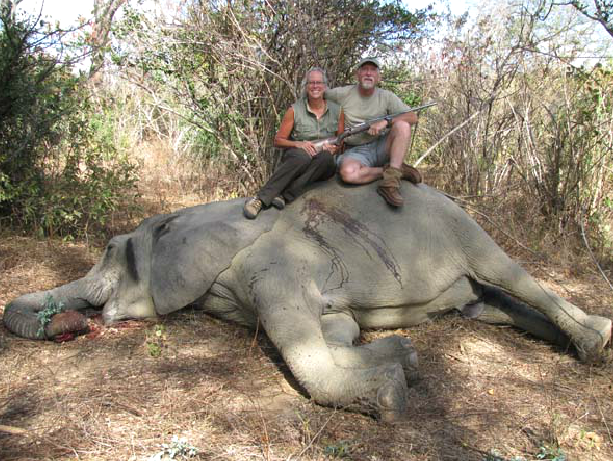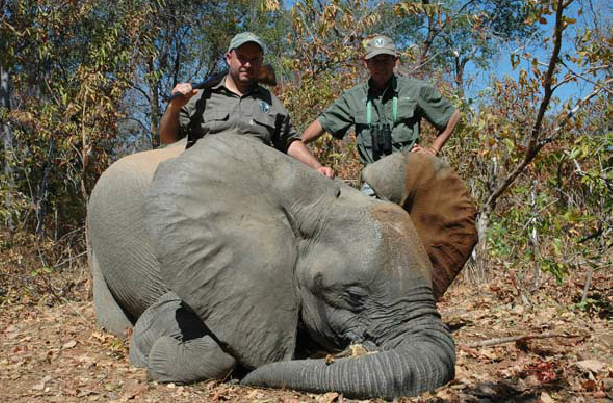India: War on Poaching Intensifies.
India: War on Poaching intensifies.
Since early May 2012 the Indian State, Maharashtra government provided all of its rangers a shoot to kill licence directly aimed at “poachers” regardless of age, sex or religion. The shoot to kill order was given of which rangers are immune from prosecution due to high levels of Rhino, Tiger, Lion and, Elephant poaching within the country.
When International Animal Rescue Foundation India became aware of Maharashtra government’s demands they watched and waited for results of which back then were little however, since 2013 rangers have been actively involved in over one hundred and forty nine legal killings with a further eleven so far to date (13th June 2015). The number is believed to be a lot higher. Furthermore as poaching is not just confined to “animals” but also the sacred sandalwood, forestry rangers have been actively engaging sandalwood poachers and smugglers too.
April 4th 2015 forestry rangers and Police came under heavy gunfire in two separate locations within Tamil Nadu, Chittoor. Police and forestry guards tried to apprehend some twenty sandalwood poachers/smugglers of which took off into the sandalwood forests in Andhra Pradesh. The first shoot out saw some saw some nine smugglers shot dead in one area of the sandalwood forest that is unknown to us while a second saw a further eleven smugglers shot dead in what was described as a “heavy exchange” of bullets from both sides within Chittoor in Southern Andhra Pradesh. While some people have stated this action unjust we please ask you to continue to reading (to the bottom) for you to fully understand why the Police and forestry services may have took such action.
2015 has been quite a busy year thus far for forestry rangers and Police. At the start of the year, 15th January 2015 three Rhino poachers that were directly ordered to lay down their weapons aimed them at forestry guards opening fire. The incident that took place in the Kaziranga National Park, in the remote state of Assam prompted forestry guards to act quickly and professionally to preserve the sacred One Horned Rhino of which they shot the three poachers dead instantly. Fortunately no forestry guards or the Rhino were injured this time.
March 2015 a further three ivory poachers that were caught red handed slaughtering an Indian Rhino of which the Indian Rhino lost its life and was left in a pitiful state were shot dead immediately. We’ve included the image of that Rhino below for your information and to grasp why we and India have now had enough of this slaughter and will take the relevant steps required to support our men and women to secure our fauna and flora.
Image: Rhino killed by ivory poachers - poachers shot dead on site.
While poaching continues so does “hunting the poachers too” and so it rightfully should. International Animal Rescue Foundation India supported by its sister Africans Environmental company, began paying five “unnamed” forestry units within the shoot to kill zones larger cash incentives to hunt and take down any mammal or sandalwood poachers. The organisation has come under some fierce criticism from mainly European and American citizens most of which are devout church goers or, believe poverty is the first step that needs to be dealt with.
International Animal Rescue Foundation’s Indian Chief Executive Officer Vasvi Kanal stated “On consulting the Chief Environmental Officer back in 2012 when we were made aware of Maharashtra’s stance we knew we had to do something to support our brave men and women. After a meeting in New Delhi that following summer it was decided we should support the shoot to kill policy to send a a direct message out to poachers that you’ll no longer simply walk into our forests and parks and take what’s not rightfully yours”. Kanal went onto state “The shoot to kill policy had to be endorsed one way or the other and, I thank the Chief Environmental Officer Dr Jose Depre for wiring the funds directly to us that are now placed into the hands of these brave men and women to seek and kill poachers”.
Image: Indian Rhino poacher shot dead on site.
Since the policy was enacted in 2012 in Maharashtra some seven states within India have since followed suite of Maharashtra’s firm stance and, since 2014 we’ve seen a staggering increase of poachers that have been caught trying to kill Rhino, Elephant, Tiger or illegally harvesting sandalwood shot dead on site. Furthermore many Indian press agencies have picked up the organisations support creating debate and stories on the subject that has encouraged more and more female and male citizens to come on board to protect and preserve our natural habitat and sacred heritage.
Soon after Maharashtra’s stance on “all animal and habitat poaching/destruction” took on a new positive twist, Nepal back in 2013 set their Anti Poaching Units into action - to hunt the - hunters. About 10 years ago, when the country was deeply mired in a civil war between government forces and Maoist rebels, there was hardly any focus on wildlife protection in one of Nepal’s most famous parks
The number of army monitoring posts in and around the park was reduced from 30 to seven as soldiers were shifted to anti-insurgency operations. In 2002, about 37 Rhinos were killed by poachers, triggering grave concern over the future of One-Horned Rhinos. Their numbers dropped from an estimated 612 in 2000 to less than 375 in 2005.
“According to our last rhino census in 2011 the number of Rhinos in the park has risen to more than 500,” said Kamal Jung Kunwar, a senior official at the Department of National Parks and Wildlife Conservation.
As the chief of the Anti-Poaching Operation from 2003 to 2007, Mr Kunwar played a key role in the conservation of Rhinos in Chitwan National Park. Spread over an area of more than 930 sq km, the park consists mostly of Sal trees and grasslands. Its flat lowlands are home to a variety of endangered animals like Royal Bengal Tigers, Rhinos, Leopards and Gharial Crocodiles. Crucial re-deployment: The successful conservation effort is attributed to a variety of initiatives, including tough action against poachers, enhanced intelligence and involving villagers living around the park in conservation efforts.
Image: Rhino poacher shot dead.
Meanwhile, while India strides forwards in its tough Anti Poaching operations poachers are still targeting rangers and police leaving their seriously injured on in many cases themselves killed. Deaths continue on both sides and rarely do the press and media overseas bother to print on the bravery of these men and women or, their tragic deaths.
Back in January 2014 poachers killed a female Rhino and a home guard at the Rajiv Gandhi Orang National Park, that Wednesday. Park officials said the home guard, Sushil, was killed during a gun battle with the poachers, who also managed to chop off the Rhino’s horn.
Rifles and ammunition were recovered from the spot. This is the second case of poaching at Orang which has about 100 Rhinos. The last Rhino was killed earlier in December, following which the park authorities announced a cash reward of Rs 50,000 for information on poacher Md Joynaluddin alias Junu. The authorities have also pasted Joynaluddin’s posters at several places in Darrang, Sonitpur, and Morigaon districts.
Back in 2014 a survey was undertaken on the number of rangers that are sadly murdered by poachers and killed by wild animals within the country according to the IBT. The results were shocking of which encouraged International Animal Rescue Foundation India to push more funding into local forestry units around Assam and the Ministry that supports guards financially. India loses more forest/Anti Poaching Guards than any other country on the planet.
Most of the Indian forest security men and women have been killed by poachers and wild animals, states the survey by non-profit organisation International Ranger Federation (IRF). In the past three years, as many as 72 forest rangers died in India, whereas in other countries in Asia, Africa and America, only less than 10 deaths of forest rangers have been reported, The Times of India reported, quoting the survey by IRF which strives to create awareness about forest rangers and security men.
It can be recalled that smugglers of red sanders killed several forest rangers in AP’s Tirumala forests in recent years. Notorious bandit Veerappan has also killed several forest officers and security men till a decade ago. The survey further stated that about 60 percent of the forest rangers’ killings, in the last three years, happened in Asia.
“We are extremely concerned that rangers continue to face high levels of violence and are being murdered at an alarming pace,” said IRF president Sean Willmore.
India lost 24 forest rangers in 2014, 14 in 2013 and 34 in 2012. India tops the list in the deaths of forest rangers during all three years. The report went onto state - That most rangers were killed by wild animals and poachers. Apart from animals and poachers, diseases such as dengue and malaria, forest fires and road accidents have also claimed the lives of rangers, the survey added.
In India, smugglers of wild animals and forest wealth like red sanders do not hesitate to kill rangers, if they are obstructed from committing the crime. In Seshachalam forest of Andhra Pradesh, about 200 smugglers attacked forest rangers and killed two officers in December 2013. The 200 smugglers first rained stones on the ranger sand then attacked them with batons. Rangers in India are often seen unarmed, making them vulnerable to the smugglers’ attacks.
The government of India has been dealing with wildlife poachers with an iron fist in the past one year with 30 poachers being gunned down in the Northeast alone. The number that figured in the data released by the environment ministry is the highest ever in the country. Most of the killings took place in the Kaziranga National Park, Assam. The KNP, Assam is the largest known “active poaching area” hence the largest amount of hits and is custodian to over 1000 endangered Indian one Horned Rhinos.
“The number shows our determination to eliminate wildlife traffickers and poachers. It is a big achievement of the Modi government,” environment minister Prakash Javadekar said recently.
Highly sophisticated arms were recovered from the poachers who killed Rhinos for horns smuggled to South-East Asia through porous Myanmar. Hunting down of poachers in Kharbi Anglong of Assam was undertaken by the Congress-led Assam government to save single-horn rhinos of Kaziranga and nearby areas.
Big cats at huge risk:
Wildlife in other parts of the country isn’t as lucky as the Rhinos. As many as 23 Tigers and 116 Leopards were poached in 2014 across India, with states like Uttarakhand, Maharashtra and Madhya Pradesh reporting a large number of cases.
“These are the cases that have been reported. There might have been cases where the poachers took the whole animal, without leaving a trace,” said Tito Joseph of the Wildlife Protection Society of India. Traffic, a non-government group monitoring wildlife trade, says that there has been no let down in illegal wildlife trade in India. It says the Northeast is turning into a hub of wildlife smuggling.
A report by the National Tiger Conservation Authority also indicates weak wildlife crime management in the country. It states that almost 40% of the forest guards do not have enough equipment to deal with highly organised wildlife crimes. “The states are not providing funds to modernize wildlife crime management,” a senior official said.
Concluding;
Despite some public criticism calling the organisation “dogs” and “disgusting” India’s tough stance on Anti Poaching must continue. International Animal Rescue Foundation India hopes to push a further $15,500 into the cash incentive jar to help equip rangers, police and forest guards. Furthermore the environmental company that has some one people working on the ground in New Delhi will be working with local communities in poverty stricken zones where poachers are known to originate from to help decrease poaching, improve poverty and hopefully decrease killing on both sides.
Lastly I wish to leave you with this video directed at those that believe Indian forestry guards and Anti Poaching Units are randomly picking off innocent people. Please watch the video to the end and undertake your own Google search on those brave men that sadly lost their lives fighting for animal and environmental freedom.
Thank you for reading.
Johan La Roux
Rhino Welfare Project Africa.
Why are we still hunting Elephants for - Adrenaline Junkies.
As the elephant took a mouthful of food the hunter pulled the trigger exploding a bullet into the back of elephants head leaving this magnificent beast writhing on the ground in a pool of its own blood. What a cowardly bastard.
Why are we still hunting elephants for? This is a question I constantly ask oneself, why? What encourages a hunter to hunt Elephants for? Power, adrenalin, or the fear than an elephant could kill the hunter?.. Much research I undertook about hunters back in the 1990’s revealed that many hunters feel the need to hunt (dangerous game) due to the thrill and rapid adrenalin rush, the cardiac muscle beats faster and harder, surges of hormones are released and the “type” of sexual gratification which has been said to be addictive continues to push hunters to kill more and more.
Back in 1994 I researched a group of American game hunters from Dallas Safari Club. I found in my research that vast surges of adrenalin was mainly responsible for hunters hunting larger and more dangerous game [this of course is not uncommon to most people]. The “adrenalin rush” is in a sense though addictive especially when in the heat of the moment or leading up to a “fight or flight scenario”. In medical terminology we better describe this type of behavior as Impulse Control Disorder (ICD) which is a class of psychiatric disorders characterized by impulsivity – failure to resist a temptation, urge or impulse that may harm oneself, others or in this case the “impulse to kill more dangerous and bigger” game.
These “type” of psychiatric disorders concern oneself more than say those whom have been abused. Furthermore are these type of psychiatric disorders the reason why so many more game hunters are entering Africa to kill. Lastly while the hunter is lavishing within the trills of killing does such killing displayed in videos such as YouTube encourage other people not within the hunting theater to become active in the killing fields? The answer to them two questions is yes, to what extent though I and Professor A. Ball are still investigating in great depth. I’ve included a YouTube video for you to better understand what I am explaining.
As one can clearly see within the video the hunt is very action packed, emotionally charged and driven, one can just feel the edge and thrill. This leads me to my next issue and question which is - why are online video sites such as YouTube allowing such imagery to be broadcast? Research has already proven as of 2010 that large and medium sized game from lions to elephants, antelope and giraffe for instance are not as densely populated within Africa as they were over two decades ago. Hunting activities have been noted to have dropped quite significantly.. Not because activism is stopping hunters or even restrictions but literally because there have been major reductions in wildlife populations over the course of the past twenty years..
Keeping to the main subject many psychiatric disorders feature impulsivity, including substance-related disorders, attention deficit hyperactivity disorder, antisocial personality disorder, borderline personality disorder, conduct disorder, schizophrenia and mood disorders. Please note that I nor my colleague are labeling any hunter or huntress with any form of mental illness, disorder or disease[s]. We are merely both stating that many hunters we have interviewed such behavioral characteristics have been noted. Hunters are not the only people that can suffer from adrenalin addiction or Impulse Control Disorder, everyone can at some stage in their life suffer from such neurological disturbances, disorders or addictions.
We can all relate to such hormonal and chemical discharges within the brain and body when we were children for example, many youths would feel such rushes of adrenalin within their childhood: Examples of this can be stealing money, their first kiss, sexual activity or as explained participating in an activity that is either immorally wrong or incredibly dangerous.
2004 I researched weather adrenalin was either “psychologically addictive or physically addictive” within youths and weather such addictiveness then spurned youths through their adulthood to then move onto more dangerous activities such as murder, rape, burglaries or in this case large game hunting. Our research thus far has proved such cases of early adrenalin addictiveness and Impulse Control Disorder does in deed in many cases if not monitored or treated later leads to more dangerous activities carried out simply for the sheer “rush or natural high”.
Research carried out by previous consultants and scientists had already proved adrenalin was in a way (psychologically addictive), however never did the research focus on weather such addictiveness spurned individuals in the trophy hunting industry say, to then move onto more dangerous game or even murder. Within this brief article the attention focuses on what drives a trophy hunter to kill more larger and dangerous game, the thrills they obtain and the after-effects of such behavior. The article is not focusing on mass murder, abuse, or anything other than what has been explained.
Myself Dr Jose Depre and Professor Adriana Ball consultant Forensic Psychiatrist have now completed our findings on [What spurs a hunter to kill].. This research document (to be released soon in the Online Scientific Studies of Neurological Disorders in Sweden) 1/6 was aimed at showing other examples as to why trophy hunters hunt. Article [4] details children that were abused that then become the abuser will hopefully be released this June. Please note this is not the title of the 4th article and should one wish to purchase that article in paper back you will need to contact myself nearer the time when I release this book in leading high-street stores..
So is it correct to say that adrenalin is an addictive chemical release that can lead an individual say a trophy hunter, in this case to turn into a dangerous game hunter? Furthermore like opiates or illicit narcotics when one becomes use to the highs of such neurological and/or synthetic pleasures will the individual turn to more dangerous and destructive activities, is adrenalin in its self additive too? Indeed it is of which can be quite difficult for a sufferer to overcome, furthermore failing to treat the sufferer that is clearly on a mission to kill more and more then its quite right to say that adrenalin can lead to more destructive activities being played out. Would this be then the main reason as to why hunters that start of killing small game then go on to killing larger and more dangerous game, in this instance elephants?
The answer to that question is yes. Its quite wrong though to state that “trophy” hunters whom kill animals kill because they were abused as children, or have small penises, lack femininity and masculinity, or need to prove oneself. While there is evidence relating to such human past and present behavior regarding abuse and lack of say (masculinity) there is by far more evidence within the scientific world that indicates and proves hunters can suffer from Impulse Control Disorder or are addicted to adrenaline and noradrenline which are two separate but related hormones and neurotransmitters.
I myself would be more concerned about an “unstable” hunter that is suffering from (ICD) and/or addiction to adrenaline and noradrenline than say, an unstable hunter that needs to prove oneself, or has been abused as a child. Child abuse indeed “may” lead to more sinister and violent activities carried out by the abused however counselling and cognitive therapy can in many cases solve these problems if caught in the early stages before onset of serious mental illness. Proving oneself or weather the individual feels they lack masculinity or femininity is easily treated again with therapy, of which is more a low key behavioral and complex problem treated by a Psychologist rather than a Psychiatrist. Medication is rarely required too.
While the elephant is indeed the prime catch for many experienced hunters and huntresses, the main reasons trophy hunters, say, will hunt is literally for this sheer addictive pleasure of knowing they’re pushing dangerous limits.. In a way one could say that hunting dangerous game is more identical to ones first time stealing from a sweet shop, or being dared by a mate to do something that is either dangerous or very wrong.. Like small game hunting the thrill and adrenalin is there and identical to that of stealing, both hunter and common thief feel the urge after their first mission to push for bigger and better trophies, the need to fulfill ones inner desires is a crave that in itself is very addictive.
Over the past fifteen years I have interviewed many hunters and poachers around the globe of which in my findings I have found that most hunters and illegal poachers that start of with say, small game suffer from as explained Impulse control disorder and adrenaline addictiveness behavioral problems. What I myself did note is that these “obsessive behaviors” seem more related to (trophy hunters) rather than (hunters for food). Trophy hunters are themselves hunting for the sheer thrill while (hunters for food) take only what they require. Furthermore there was quite a lack of “obsessive characteristics” in poachers - which is mainly because they themselves are either being given the order to kill say a Rhino or elephant.
This infant elephant was hunted for what reasons we’ll never fully understand. The elephant posed no threat, it wasn’t a problem animal, in pain nor suffering. There is no real trophy to take home, no tusks, Why?
Elephants are to myself a magnificent gentle giant that has roamed the plains of Africa for hundreds of years. Identified by Dr Blumenbach in 1797 the species listed below killed by Mr Jofie Lamprecht being the African Elephant scientifically identified as Loxodonta africana has been hunted now for hundreds of years. This particular hunter caught my eye, not because of the fact he slaughtered this colossally sized African elephant but more the speech he made after the killing aka [trophy] hunt.. That speech can be read below which is typical and classical behavior of an individual suffering from Impulse Control Disorder and adrenaline addictiveness behavioral problems.
The speech reads:
I honor you my friend. I will follow your round and oval until the end of my time. May your presence in the wilds of Africa continue so that generations from now my prodigy may view your glorious splendor and hunt you like I have had the privilege of doing. Thank you for walking the trails of Africa. Thank you that I can hunt you. Your protein now fills the bellies of many in the surrounding villages. The money you generated will in good faith preserve these wild lands there you walk for your prodigy to be safe and grow old.
Farewell my friend. I will join you when it is my time.
The speech is classical to that of the war with Veii and the Etruscans, under Servius Tullius of which the Rome’s sixth King Servius Tullius went to war with Veii (after the expiry of an earlier truce) and with the Etruscans. King Servius Tullius like many Roman warlords had to prove themselves -fight to the death, after fighting such a glorious and splendid battle did they then lay down their arms and celebrate with a triumph speech. Mr Jofie Lamprecht is in reality no different to King Servius Tullius - however King Servius Tullius was more gentleman like.
Many people have problems that occur repetitively, disrupt their lives and seem completely out of control. Sometimes we’re asked if these problems are examples of obsessive compulsive disorder (OCD). And indeed, there are some similarities to OCD. Nevertheless, these problems are not considered to be in the same category. So what are we talking about here? Specifically, we’re referring to the category of emotional disorders known as Impulse Control Disorders. The similarity to OCD is seen in the fact that impulse control disorders, like OCD, are repetitive and very difficult for the person to bring under control. Furthermore, like OCD, they greatly disrupt and impair the sufferers’ lives. However, Impulse Control Disorders also differ from OCD in important ways. Impulse Control Disorders, unlike OCD, often do not cause a great deal of distress to the person who has them—that is, unless or until legal authorities are called in. Furthermore, distress, anxiety and upset do not play a very large role in most Impulse Control Disorders. In fact, many of those with Impulse Control Disorders actually report feeling pleasure from their behaviors even though their lives are impaired by them.
When I myself and Professor Ball interviewed all hunters not one hunter showed any signs of distress, anxiety and upset, the last of the hunters whom we interviewed this past month hadn’t hunted elephants or dangerous game such as elephants or lions, rhinos or wildebeest.
No empathy or guilt was shown when they were shown images and videos of other hunters killing. However what was shown on the sudorometer and electrocardiograph was increased heart rate and perspiration which indicated to ourselves that the interviewees were feeling excited. When shown video imagery from YouTube levels of sweat and heart rate increased by 2.5% When asked if “If you had the chance to hunt an elephant now would you do it?” 19/27 hunters said yes. So in reality when we question ourselves why are we still killing elephants, or any dangerous game its quite right to say programs on television and YouTube really are not doing our wildlife any form of good. For example if your shown a video of a chocolate bar advertisement from which you’ve never indulged in that sweet the chances are “that advertisement” will encourage you to purchase that sweet.
The full results of the above examination and all test experiments will be released later this year.
Looking at our past we can also see that elephants were not just hunted for the sheer fun of it..The main reason that elephants were hunted was for their ivory. This is worth a ton of money and so huge numbers of elephants were slaughtered in order to be able to cash in on such a business. With each tusk weighing up to 200 pounds, this was amazing. Early attempts to remove the ivory tusks and to leave the elephants alive didn’t work. The elephants were simply too aggressive for this type of process and it was too dangerous for humans to take part in.
Elephants are taking quite a hit all over Africa and its quite evident from past research and present researching “why” elephants were and still are legally hunted. One cannot just point the blame at natural neurological issues though as I myself have explained, above I’ve clearly detailed why [we still are hunting] from past to present but more from a different perspective of things.
Moving back to just how big a problem adrenalin addictiveness and Impulse Control Disorder’s can be - curing such disorders that are quite natural is more easier said than done. At the end of the day its down the individual hunter and huntresses to come forward should they feel they have an “obsession” or (ICD). One cannot force a hunter to visit a therapist however what we can do is make aware the problems that some hunters if not all believe is quite actually typically normal behavior. One very good article that I do suggest people read is that of Serial Offenders which details much of the above in this book, however its very broken down. Read more here.
Excessive adrenaline build up changes a trophy hunters physiology. The trophy hunter becomes sensitized to the epinephrine and used to what it does to them. Initially it may be difficult to cope with, but after awhile, the individual becomes so accustomed to it that you can function. This is not always the case though as it has been noted adrenaline junkies feed of such fear which in turn provides a type of sexual gratification afterwards and relaxation. Adrenaline sends your brain into full throttle and your wit becomes majorly amplified. This is because your slower brainwaves in the alpha and theta ranges become severely diminished. Alpha rhythms are drowned out by high amounts of mid and high-range beta brainwaves. This leads to further production of dopamine, epinephrine, and cortisol. Trophy hunters have long stated that the majority of the time they hunt is not for the actual trophy but more the “adrenaline hit”.
Author Louis Schlesinger quoted as Professor Ball did “emotional, impulsive murderers are less able to regulate and control aggressive impulses”. If you’ve being paying attention and scroll back up to the very top of the article one will read very identical characteristics relating to narcissistic psychopathic murderers to that of those whom kill large game, dangerous game and small game…
Treatment of Impulse Control Disorders has lagged behind the treatment of many other emotional disorders such as depression, anxiety, and obsessive compulsive disorder. There are some indications that treatments such as Habit Reversal Training may have value for Trichotillomania. However, most of the Impulse Control Disorders beg for more research on potential treatments. Of course, even if we had a plethora of effective treatments, there’s still the problem that most of those with Impulse Control Disorders aren’t all that interested in getting help. Sigh.
Why are we hunting Elephants again?
Thank you for reading - Stay tuned for my book on Impulse Control Disorders and Trophy Hunting.
Dr Jose C. Depre Md, VetMed, EnvStu, Phd

